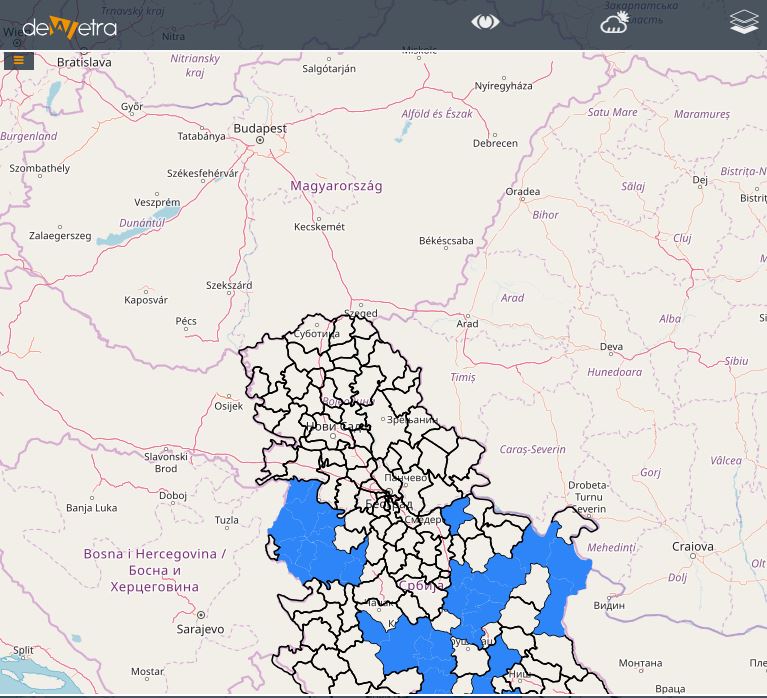Difference between revisions of "DesInventar layers(eng)"
(Created page with " [Home] - [Events] {| class="wikitable" |- |style="background-color: orange;" |Layer name |style="background-color: orange;"|DesInventar - layer...") |
|||
| (One intermediate revision by the same user not shown) | |||
| Line 8: | Line 8: | ||
|- | |- | ||
|Tag | |Tag | ||
| − | |Disaster | + | |Disaster Databases |
|- | |- | ||
|Folder | |Folder | ||
| Line 14: | Line 14: | ||
|- | |- | ||
|Source | |Source | ||
| − | |[https://www.desinventar. | + | |[https://www.desinventar.net/ DesInventar project] |
|- | |- | ||
|Description | |Description | ||
| − | | | + | |Population growth and urbanization processes, trends in land use, increasing impoverishment of significant segments of the population, use of inappropriate technological systems in the construction of houses and basic infrastructure, and inappropriate organization systems, amongst others, are factors that have increased the vulnerability of the population vis-a-vis the wide diversity of physical and natural events. |
| − | |||
| − | More info at: [https://www.desinventar. | + | However, lack of systematic, homogeneous, and compatible records of disaster typologies, understood as the effect of the occurrence of threatening events on the vulnerability of country, on the one hand, and insistence on considering disasters only as effects of events of huge proportions and high impact, on the other, have hidden the thousands of small and medium scale disasters that occur every year in country. |
| + | |||
| + | Until the mid-1990's, systematic information about the occurrence of disasters of small and medium impact and disaggregated data about the effects of large scale disasters was not available in most countries in the world. | ||
| + | |||
| + | From 1994, the creation of a common conceptual and methodological framework was begun in Latin America by groups of researchers, academics, and institutional actors linked to the Network of Social Studies in the Prevention of Disasters in Latin America (Red de Estudios Sociales en Prevención de Desastres en América Latina - LA RED). | ||
| + | |||
| + | These groups conceptualised a system of acquisition, collection, retrieval, query and analyis of information about disasters of small, medium and greater impact, based on pre-existing official data, academic records, newspaper sources and institutional reports in nine countries in Latin America. This effort was then picked up by UNDP and UNISDR who sponsored the implementation of similar systems in the Caribbean, Asia and Africa. The developed conceptualisation, methodology and software tool is called Disaster Inventory System - DesInventar (Sistema de Inventario de Desastres). | ||
| + | |||
| + | The development of DesInventar, with its conception that makes visible disasters from a local scale (town or equivalent), facilitates dialogue for risk management between actors, institutions, sectors, provincial and national governments. | ||
| + | |||
| + | DesInventar is a conceptual and methodological tool for the generation of National Disaster Inventories and the construction of databases of damage, losses and in general the effects of disasters. <br> | ||
| + | |||
| + | More info at: [https://www.desinventar.net/ DesInventar project] | ||
|- | |- | ||
Latest revision as of 21:54, 17 November 2018
| Layer name | DesInventar - layers | |
| Tag | Disaster Databases | |
| Folder | ||
| Source | DesInventar project | |
| Description | Population growth and urbanization processes, trends in land use, increasing impoverishment of significant segments of the population, use of inappropriate technological systems in the construction of houses and basic infrastructure, and inappropriate organization systems, amongst others, are factors that have increased the vulnerability of the population vis-a-vis the wide diversity of physical and natural events.
However, lack of systematic, homogeneous, and compatible records of disaster typologies, understood as the effect of the occurrence of threatening events on the vulnerability of country, on the one hand, and insistence on considering disasters only as effects of events of huge proportions and high impact, on the other, have hidden the thousands of small and medium scale disasters that occur every year in country. Until the mid-1990's, systematic information about the occurrence of disasters of small and medium impact and disaggregated data about the effects of large scale disasters was not available in most countries in the world. From 1994, the creation of a common conceptual and methodological framework was begun in Latin America by groups of researchers, academics, and institutional actors linked to the Network of Social Studies in the Prevention of Disasters in Latin America (Red de Estudios Sociales en Prevención de Desastres en América Latina - LA RED). These groups conceptualised a system of acquisition, collection, retrieval, query and analyis of information about disasters of small, medium and greater impact, based on pre-existing official data, academic records, newspaper sources and institutional reports in nine countries in Latin America. This effort was then picked up by UNDP and UNISDR who sponsored the implementation of similar systems in the Caribbean, Asia and Africa. The developed conceptualisation, methodology and software tool is called Disaster Inventory System - DesInventar (Sistema de Inventario de Desastres). The development of DesInventar, with its conception that makes visible disasters from a local scale (town or equivalent), facilitates dialogue for risk management between actors, institutions, sectors, provincial and national governments. DesInventar is a conceptual and methodological tool for the generation of National Disaster Inventories and the construction of databases of damage, losses and in general the effects of disasters. More info at: DesInventar project | |
| Screenshot |
